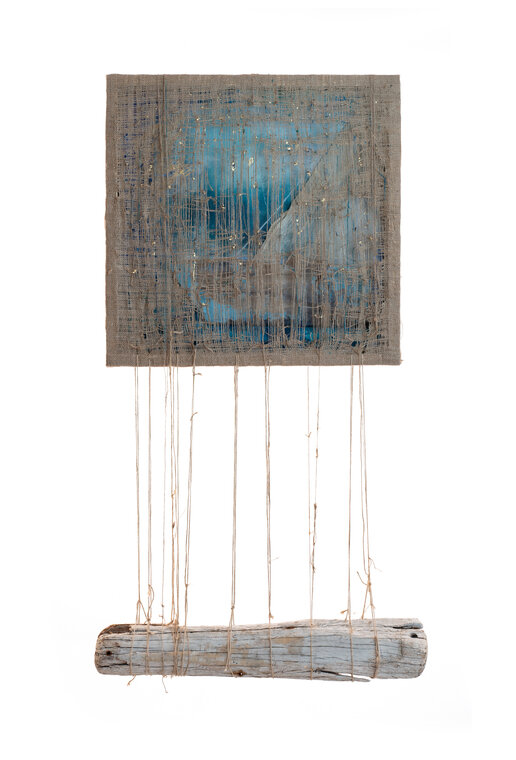
The work is part of a project developed together with my wife, in progress, born with the intention of reinterpreting our experience in an artistic key and recalling the events of the Odyssey as a metaphor for our existential journey.
In this case, the reference is to the figure of Penelope, who wove and unstitched, wove and unstitched, to escape the pretensions of the suitors, patiently waiting for Ulysses to return to Ithaca.
The work has a canvas in the upper part (mounted on a square-shaped frame),
“Deconstructed”, that is, patiently unstitched and torn, cutting, unraveling and mending the jute thread. Conceived as a canvas-case, behind its texture dotted with traces of gold and different shades of blue, it also shows its interior: a pictorial and material assembly on photographic print that evocatively represents a sailing boat crossing a sea with iridescent shades of blue, with ropes, fish and rocks.
In the lower part of the work, anchored by knots and thin ropes to the canvas, there is a wooden element, returned to the earth by the sea, collected on the beach in one of our walks from which we often draw creative inspiration. It is full of the evocation of memories of the sea, of travels, landings, departures and returns ... The idea of the bond, of the bonds, of the knots to be untied, is another metaphorical component of the work.
The work, structured as a wall installation, mixes the pictorial language of the male component with the photographic language of the female component, which distinguish our couple.
Taken as a whole, it is a tribute to Ulysses and Penelope, to their emblematic search for a Man-Woman fusion:
"... husband and home give you and glorious harmony as a companion,
nothing is more beautiful and more precious than this
when man and woman run the house with one soul,
much anger to the evil ones but for friends it is joy and they have a splendid fame. "
(From the Dialogue between Ulysses and Nausicaa, Odyssey VI, 180-185)
